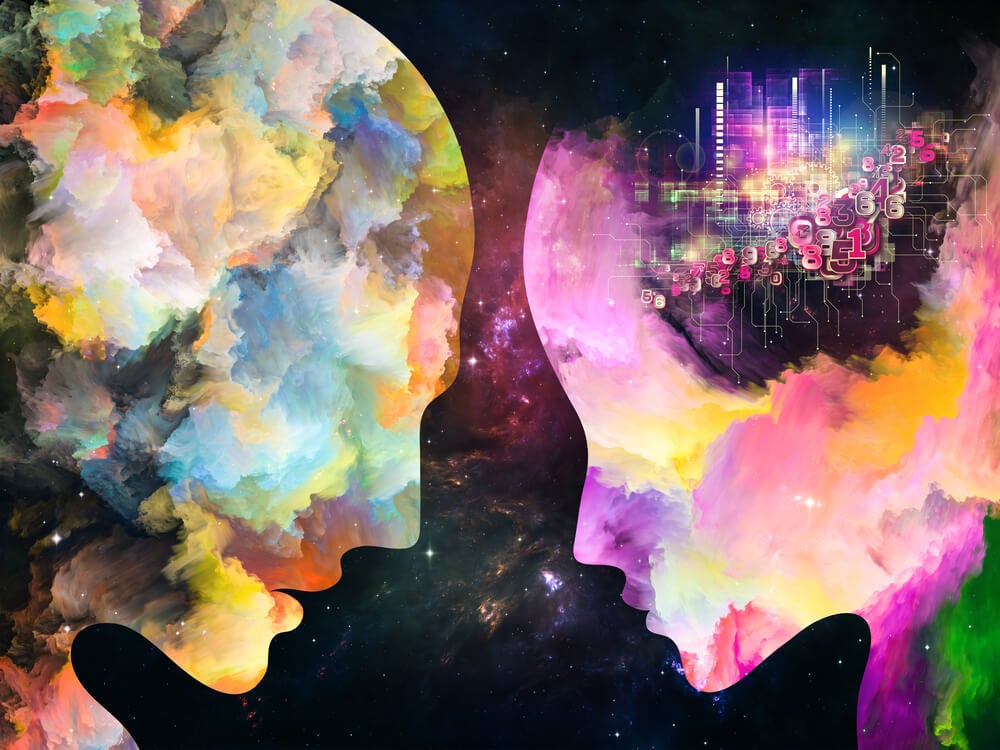Carl Gustav Jung is perhaps the most famous dissident of classical psychoanalysis. He departs from Freud’s concepts and explores the ancestral and collective roots of the unconscious. New lights have emerged from this intellectual adventure; among them, the 12 personality archetypes.
From the analysis of the symbols and myths present in different cultures, Jung established the 12 personality archetypes, which are types of molds or patterns of behavior, that define specific ways of being, are also symbols and cultural images that are part of the personality. collective unconsciousness.
- Doesn’t the person reach enlightenment by fantasizing about light.
- But by making darkness conscious?What does not become conscious manifests itself in our lives as destiny?.
- – Carl Jung-.
Jung defines the 12 archetypes as “an innate tendency to generate images with an intense emotional burden that expresses the relational primacy of human life”. A kind of fingerprint of all mankind that remains immersed in each other’s unconsciousness. You’re defining the particular characteristics of each of us. These archetypes are as follows.
The sage represents this freething man who makes intellect and knowledge his main raison d’eor. Intelligence and analytical ability are for him the real way to understand and understand the world. This corresponds to those who always have information, commitment, or a logical argument. at your fingertips.
The innocent is the one who seems to have read all the self-help books in the world and turned them into his DNA, is optimistic and seeks happiness. Look on the bright side of everything, you also want to feel perfectly adapted to the world, you also want to like, belong, be recognized by others.
It is one of the 12 archetypes of personality that corresponds to the daring traveler, who goes along the road without defining a defined route, always open to novelty and adventure, has a deep desire to discover and discover himself, in his negative aspect. , is also the search engine of the ideal that is never satisfied.
The governor corresponds to the classical leader, who considers himself capable of putting the rules of the game in any situation, stable and committed to excellence, wants others to do what he says and generally has many reasons to demand it. one of the 12 personality archetypes linked to power, which can also become despot in its desire for affirmation.
The creator has a deep desire for freedom because he loves news, he loves to transform himself to create something entirely new that has his seal, spiritual, nonconformist and self-sufficient. With a lot of imagination, he’s full of genius, sometimes he’s fickle and he thinks more than he does.
She feels stronger than others and, as a result, gives almost maternal protection to her environment, wants to avoid harming those under her wing and wants to prevent any risk or danger from threatening the integrity or happiness of others. he does not control himself, he becomes the martyr who blames others for his sacrifices.
The magician is the equivalent of the great revolutionary. Regenerate and renew, not only for you, but also for others. He himself is in a constant process of transformation and growth. On the downside, he’s a sick person who makes others sick. This sometimes turns positive events into negative events.
The axis of the hero’s life is power. It has an extraordinary vitality and strength that strives to fight for power or honor. He prefers anything but losing. In fact, you don’t lose because you don’t give up. This can be very ambitious and powerful.
The bandit is another of Jung’s 12 personality archetypes that speaks of rebellion, is a transgressor, provocative and totally independent of the opinions of others, in fact, he likes to go against and think with his own head, not by influence or pressure. On its downside, it becomes self-destructive.
The lover is all heart, all sensitivity. He loves love and therefore expenses. Not just romantic love, but all forms of love. His greatest joy is to feel loved, he enjoys beauty, aesthetics and senses in a refined way, makes beauty, in the broadest sense, a superlative value.
The madman’s archetype is also known as the madman’s archetype. The madman teaches us to laugh, even of ourselves. He has no mask and usually removes the masks of others. He doesn’t take himself seriously, because his way is to enjoy life. In its negative aspect, it can be libidinous, lazy and greedy.
The orphan is the one who wears wounds that he can’t close, feels betrayed or disappointed. He wants others to take care of him and, of no, he is disappointed, he often joins other people who feel like him, he often victimizes himself. In front of others, he is innocent, but cynical in humor.
What we present is not the only classification of Jung’s 12 personality archetypes, in other categories appear different archetypes, although fundamentally equivalent to those we have outlined in the essential part, apply to many fields, including psychotherapy, marketing and art.

